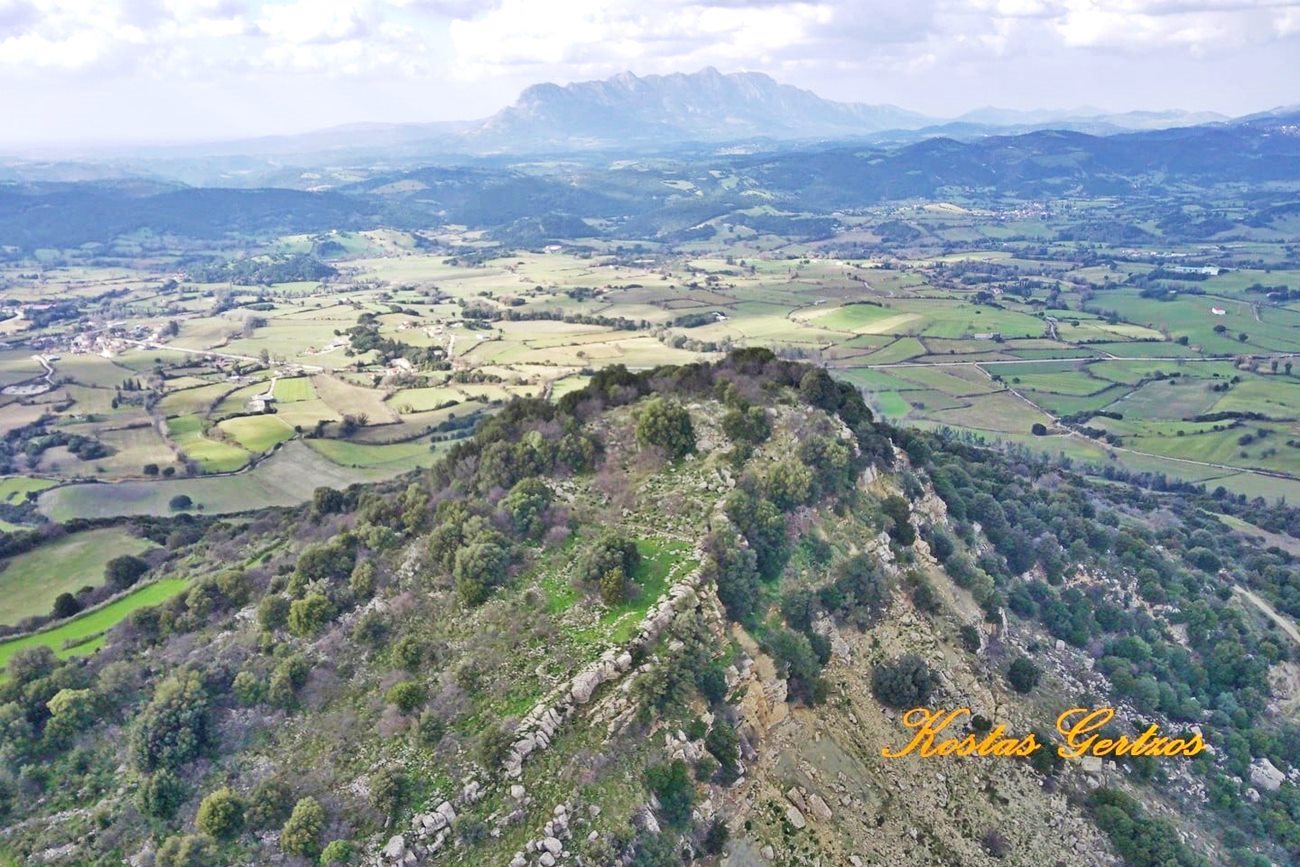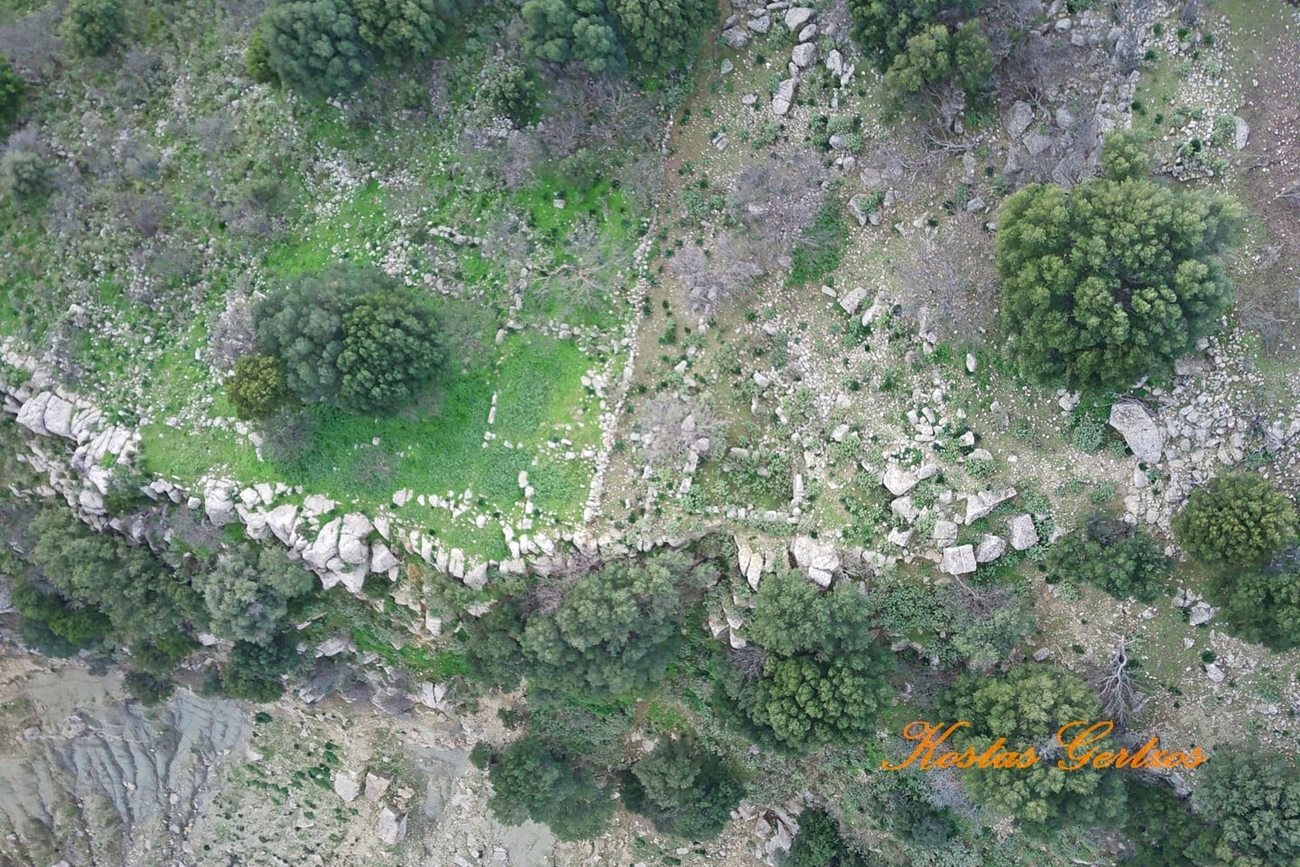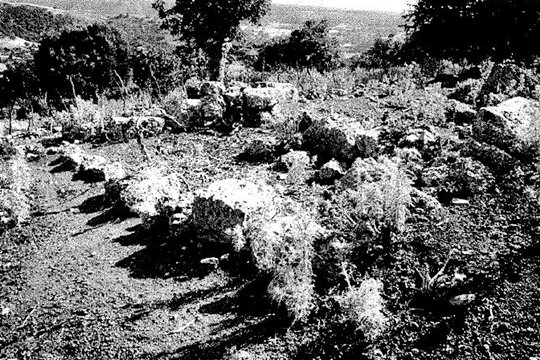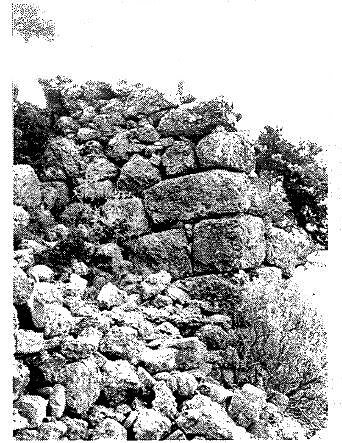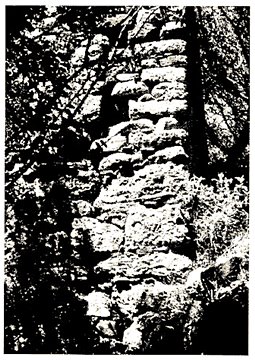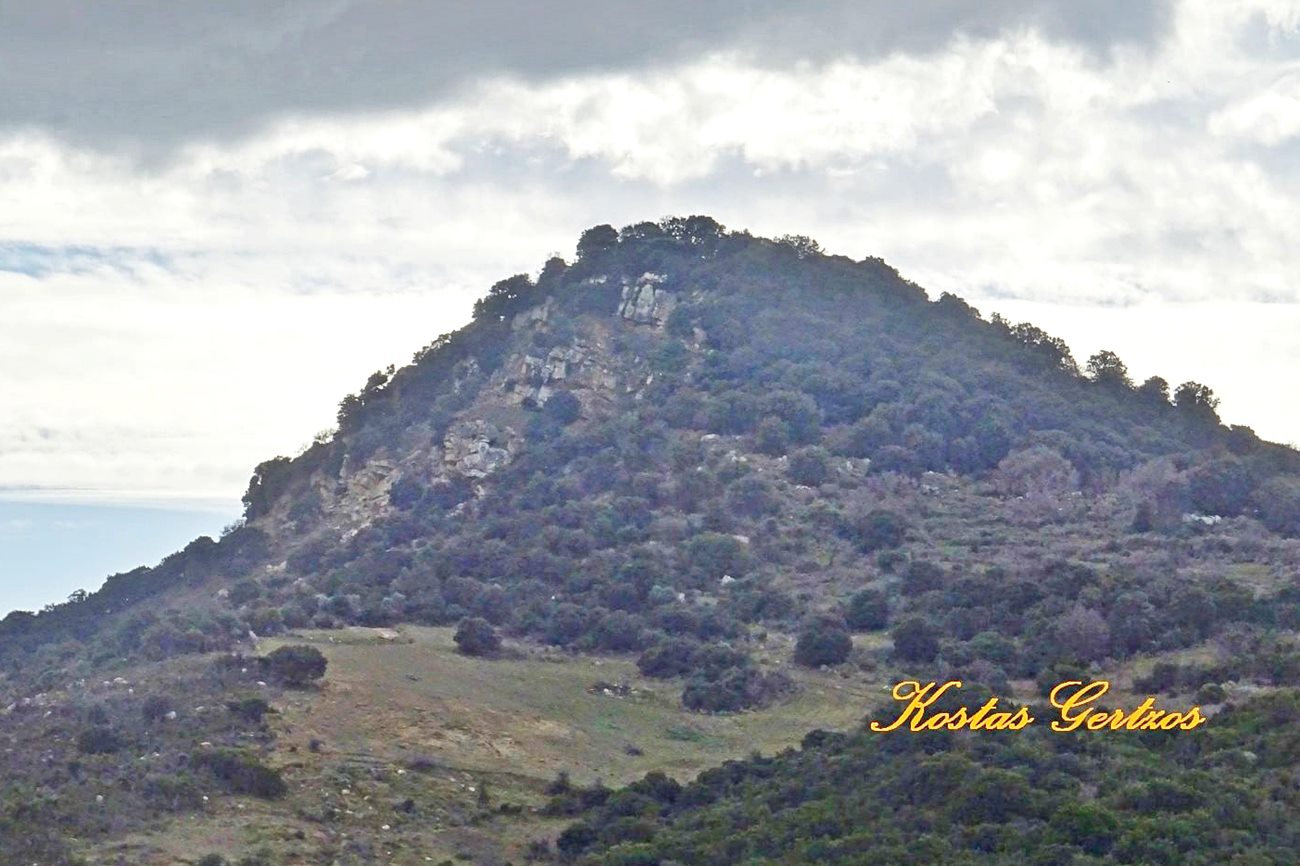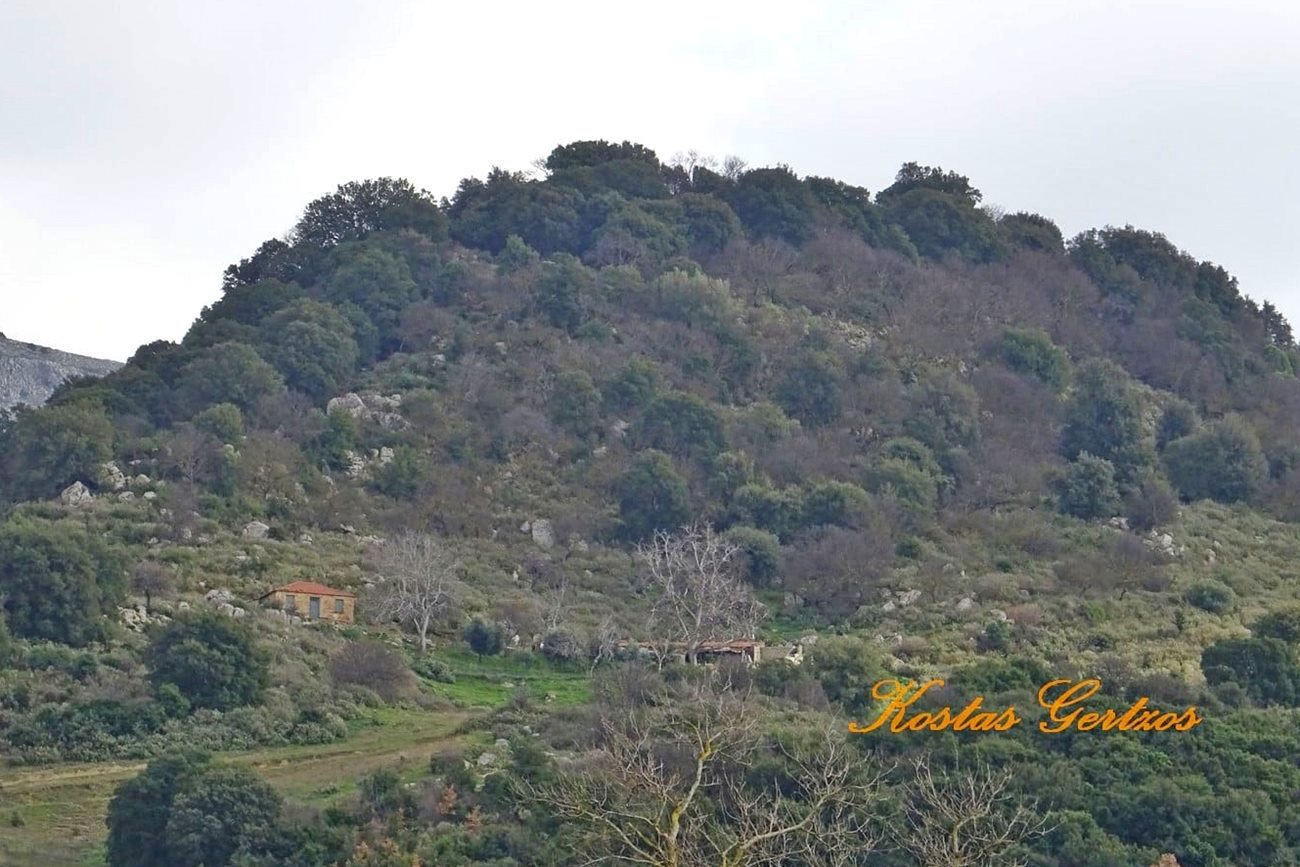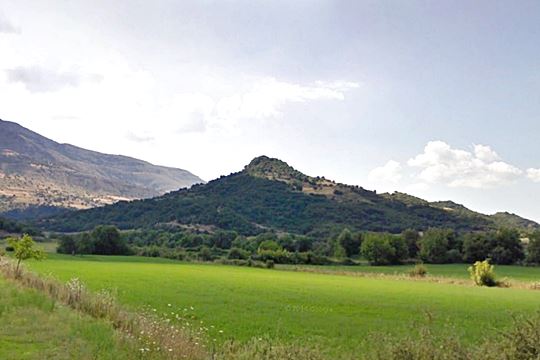Skiadas, Erymanthos, Achaea,West Greece
Doxapatri Castle
| Location: |
| On a conical hill between the villages Skiadas and Agia Triada in , Achaea, at the SW feet of Erymathos mountain |
| Region > Prefecture: | 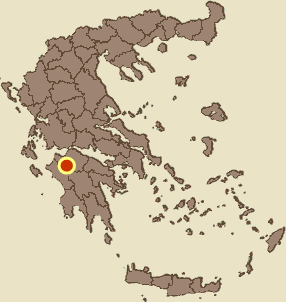 |
| West Greece Achaea | |
| Municipality > Town: | |
| City of Erymanthos • Skiadas | |
| Altitude: | |
|
Elevation ≈ 445 m (Relative Height≈150 m) |
| Time of Construction | Origin | |
| Different periods | BYZANTINE |
|
| Castle Type | Condition | |
| Castle Ruins |
In Ruins
|
The ruins of a byzantine (probably) settlement and castle between the villages Agia triada and Skiadas at the southwestern side of mount Erymanthos or Skiadovouni in NW Peloponnese.
It was built on top of an ancient acropolis. The ancient town was abandoned in the first centuries AD and was reinhabited in the Byzantine or Frankish period. It appears in sources (maps and fief lists) after 1463.
The name derives from the byzantine general Doxapatris Voutsaras who was the military commander in the area around the end of the 12th century. The general became a legend defending another castle, the castle of Araklovo .
Structure, Fortification & Buildings
The castle ruins belong to two phases. One phase is ancient and the other is medieval. It is situated on a plateau, on top of the hill, sloping gently to the south.
The hill is full of ruined buildings, which because of difficult terrain, vegetation and their very poor condition, are not visible from a distance.
A lot of damages have been caused by illegal excavations in the 1980s and 1990s by looters in search of Mycenaean antiquities in the area.
The ancient town was enclosed by a circuit wall and crowned by a fortified acropolis.The medieval village was fully contained within the limits of the ancient fortifications, covering an approximate area 300m✖100m.
The ancient city wall was restored, wherever significant stretches of the original fabric were preserved and some sections were built anew. What clearly distinguishes the ancient and medieval phases is the masonry style of each. The ancient wall is built of large cut ashlar blocks, while the medieval wall is built of smaller stones mixed with mortar and tiles. The contrast is most vivid in the places where the ancient wall has been patched.
The medieval settlement utilized the pre-existing confines of the ancient town including its acropolis at the north peak of the site. Within the north edge of the acropolis wall, a cistern was inserted probably as part of a tower complex now collapsed.
Α medieval tower similar in masonry with the tower/cistern is located on the southwest edge of the acropolis, where the inner circuit wall extends towards the outer one. The tower survives in much greater height than any other building. It is constructed of mixed masonry (stones, tiles, mortar) and it seems to have originally risen to a height of at least three stories. The relatively good preservation of this building suggests that its use, or even its foundation may have continued after the abandonment of the settlement. It is very likely that it was used as an observation tower into the Ottoman period.
The greatest medieval presence of the site consists of 47 houses concentrated in the southern area of the site between the acropolis and the southern gatehouse. Α few of the houses are built abutting the circuit wall, but most are freestanding. They are built of stone construction and conform to a rectangular typology of 5✖10m. The only ecclesiastical building in the site is a ruined church in the southeast quarter of the settlement. It consists of a single chamber with a circular apse, two engaged arches on the north and south interior walls; it could be reconstructed as a domed single-aisled basilica.
The Castle of Doxapatri was studied in the 1990s Morea Project or MARWP program (Minnesota Archaeological Researches in the Western Peloponnese) led by Professor Frederic Cooper of the University of Minnesota, USA.
About 5 km east of Skiadas village are the vestiges of another medieval village which is called “Old Skiadas” or “Castle of Skiadas” although there are no traces of fortifications.
| First entry in Kastrologos: | November 2012 |
Sources
- Konstantinos Kourelis, 2003, “MONUMENTS OF RURAL ARCHAEOLOGY MEDIEVAL SETTLEMENTS ΙΝ ΤΗΕ NORTHWESTERN PELOPONNESE”, Presented to the Faculties of the University of Pennsylvania in Partial Fulfillment of the Requirements for the Degree of Doctor of Philosophy, pag.220-234
- Photos 1, 2, 6, 7 Kοstas Gertzos, January 2022
|
|
| Access |
|---|
| Approach to the monument: |
| - |
| Entrance: |
| Like most remote, ruined and neglected fortifications, entrance is not an issue. The difficult part is to approach the castle and walk around inside. |



